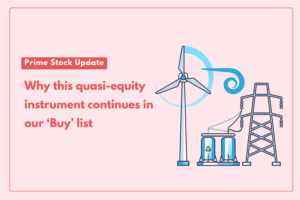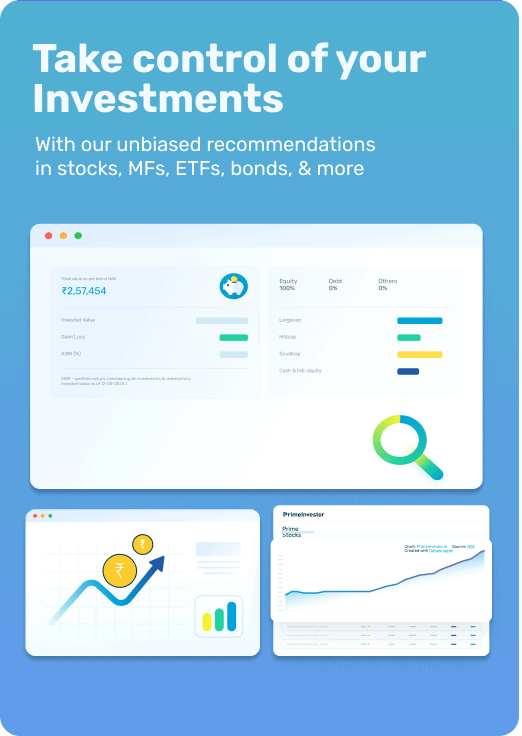After falling sharply between February and May this year, yields on long-term bonds in India have been spiking up again. The market bellwether – the 10-year government of India security – is now back at 7.25% after dipping below the 7% mark in May. The recent spike presents a good opportunity for debt investors to lock into 10-year constant maturity gilt funds. These are passive funds that are always invested in government of India bonds – either with 10-year residual maturity or averaging out to 10-year residual maturity.

Rates near the top
Unlike actively managed gilt funds, constant maturity gilt funds are passive funds where the investor is expected to time his or her investments to improve returns. 10-year constant maturity gilt funds are best bought when rates are closer to the top of a rising cycle. We think that interest rate in India are pretty close to the top in this hiking cycle.
The Monetary Policy Committee (MPC) considers three variables to decide on its rate hikes and this is where we stand on each of them.
- Inflation: CPI inflation rates are abating after a recent monsoon-induced flare-up. The current rate hiking cycle was flagged off because India’s Consumer Price Inflation (CPI) rate shot up to over 7.7% in April 2022, fuelled by supply disruptions caused by the Russia-Ukraine conflict. The lifting of those disruptions over the next few months, taken with rate hikes, saw inflation cooling to 4.31% by May 2023. After hiking the repo rate by 250 basis points from 4% to 6.5% between May 2022 and April 2023, India’s Monetary Policy Committee (MPC) has been on pause since then.
The recent months of June, July and August 2023 have seen inflation flare up again to 4.87%, 7.44% and 6.83% respectively. But this bout of inflation has been triggered by an erratic monsoon impacting sowing of cereals, pulses and vegetables. The MPC has taken the view that such spikes tend to be transitory and remained on hold.
In July, RBI imposed an incremental CRR (cash reserve ratio) of 10% on banks to stay in place until October 7, to mop up excess liquidity. The Government on its part cracked down on hoarding, curbed exports and made open market sales of vegetables, pulses, rice etc, which has helped to quell food inflation.
The monsoon too has seen a late pickup from September which should see improved output and a better rabi crop. Recently, global oil prices have been heating up again, moving close to the $90 mark posing a risk to CPI. But forecasters expect India’s inflation to remain below 6% for FY24 (World Bank – 5.9% and RBI 5.4% for FY24).
- Growth: GDP growth has been losing momentum after posting a big surge post-Covid. With the pent-up demand post Covid wearing off and also the low base effect, quarterly GDP growth has moderated from a high of 21.6% in Q1FY22 to 7.8% in Q1 FY24. The last three quarters have seen muted readings of 6.2% (Q2 FY23), 4.3% (Q3FY23) and 6.1% (Q4 FY23). These numbers are low enough to worry MPC members about the impact that rate hikes so far can have on growth. RBI is unlikely to be keen to hurt growth or sentiment through rate hikes in an election year.
- Global rates: RBI may not explicitly say it, but MPC rate actions also need to factor in changes in the global risk environment and rate cycles. Narrowing differentials between Indian interest rates and interest rates in the West, particularly US have in the past caused big FPI outflows, destabilised the Rupee and forced India to hike rates to make the country attractive to FPIs (egs 2013). In recent weeks, the US bond market has been seeing a big selloff, which has seen the US 1 year treasury yield top 5.5%. Such yield spikes in the past have seen emerging markets sell off. This wild card factor can force the MPC’s hand and trigger further rate hikes.
But we believe that hikes (if any) beyond another 25 or 50 basis points are unlikely. For one, this time around, there’s uncertainty about how FPIs will react to US treasury yields spiking, as the US government is sitting on unmanageable levels of debt while emerging economies like India are not.
Two, the recent inclusion of Indian government bonds in the JP Morgan Global Bond Index (Read about its impact of India’s inclusion ) can spark demand for Indian g-secs from passive FPIs and partly offset pullouts by active investors.
Why constant maturity funds for this debt strategy
Even assuming Indian rates have about 25 or 50 basis points of upside left in this cycle, this is a good time for debt investors with a 5-year plus horizon to buy into 10-year constant maturity gilt funds. Primeinvestor has buy ratings on SBI Constant Maturity Gilt Fund and ICICI Pru Constant Maturity Gilt Fund and you can consider either of these funds for investment. SBI Constant Maturity is part of Prime Funds.
The rationale for this call is as follows:
# 1 Timing helps
Like any other debt category, constant maturity debt funds earn their returns from interest accruals on their gilt holdings and price gains (or losses) on market prices of gilts. Entering 10-year constant maturity funds helps you to bump up your returns from both sources. When you invest in a 10-year gilt fund when market yields are at 7% instead of say 6%, the interest accruing to your NAV each year will be higher.
As interest rates are already close to their cyclical high, there’s also more likelihood of NAV gains from a fall in rates (as the next cycle comes up). If you believe that interest rates in India, like those in developed markets will only go South in the long run, you should lock into rates above 7% whenever such opportunities crop up. This is best done through 10-year constant maturity gilt funds.
# 2 Misfired active calls
Constant maturity gilt funds are an alternative to actively managed gilt funds, where fund managers actively vary the duration of gilts they own based on their own rate outlook. So why do we prefer them? Well, because active calls by gilt fund managers can go wrong. If they take an over-conservative view on rates, the fund may remain invested in short-medium duration gilts and fail to capitalise on falling rates.
If they take an aggressive view and own very long-term bonds, the fund can suffer significant NAV erosion if rates rise further. Both the direction and the timing of this call need to be right for active gilt funds to outperform the underlying security. A constant maturity fund simply owns the 10-year g sec at all times, side-stepping the risk of wrong active calls.
# 3 Low TER
Expenses often eat away a significant chunk of your returns from debt funds. Being passive products, 10-year constant maturity gilt funds have far lower TERs than active gilt funds. The two funds we recommend – SBI and ICICI Pru Constant Maturity Gilt Fund have TERs of 0.3% and 0.23% respectively against 0.40% to 0.97% for actively managed gilt funds.
Risks
10-year constant maturity gilt funds carry duration risk – the risk that a sharp rise in interest rates will trigger a fall in the NAV of your fund. Such funds are therefore not suitable for the typical fixed income investor who looks for steady NAV gains or regular income from a debt fund.
This category is among the most volatile ones in debt, because your returns are highly sensitive to changes in market interest rates. If market rates rise significantly after you buy the fund, you can make losses in the short run and lower NAV returns in the medium term too.
However, a rolling return analysis shows that the NAV hits to these funds from rising rates are usually made up by interest receipts, if the funds are held for 3 years or more. The following rolling returns, using our rolling returns calculator, show that the funds we recommend have not had any loss-making periods on a 3-year rolling return basis in the last 8 years, despite this period seeing a rising rate cycle. The average rolling CAGRs of 8% plus show that even if an investor mis-times his or her entry into these funds, stretching the holding period can lead to healthy returns over time.









29 thoughts on “Prime debt strategy: Time to enter this duration category”
WONERING WHY NOT BUY FROM RBI DIRECT THAN BUYING DEBT FUND? WHAT ARE THE PROS AND CONS?
Funds will buy and sell gilts (with varying maturities) and give capital appreciation apart from accrual (coupon). Unless you plan to do that, your return will be the yield alone in a buy and hold gilt. Vidya
Comments are closed.